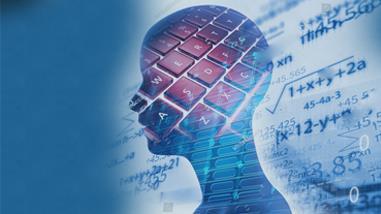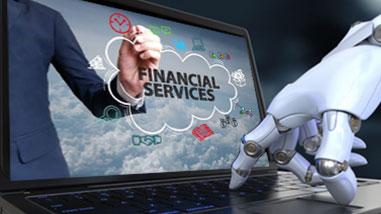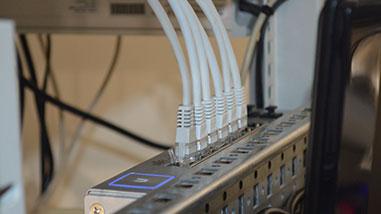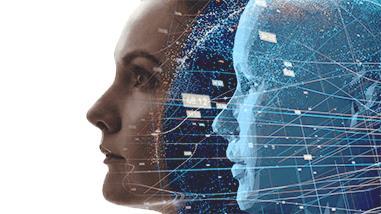Those in analytics might have come across the term Machine Learning. It is often misused and glorified as a magnificent future for machines replacing humans.
Though there is some prejudice and a lot of grandiose built around ML, the fact is ML is the most powerful and advanced technology for a modern enterprise.
In a very crisp and layman language we can conclude, Machine learning can be used in automation of repetitive tasks that would otherwise need to be done manually, thereby enhance enterprise efficiency and execute repeatedly at scale.
What is Machine Learning (ML)?
ML is a specific field in computer science that emphasizes on machine programming to enhance self-performance through data and iteration.
The start point for conventional programmer and ML is almost similar – both intend to resolve problems and begin with developing familiarity with problem domain. However, the differentiation aspect is of execution. Programmers use their ingenuity to formulate a computer program to develop solution. On the other hand, data scientists who implement ML collect inputs and target values and feed the instructions to the computer to develop a program for a desired output.
Say for example, in streaming of videos, like Netflix – engineers must spend tedious hours to develop recommendation options for its users based on the history of choices or early inputs given. In certain cases, this works, the program helps pair user watched videos for recommendation based on factors such as genre. However, it is difficult for programmers to sort among a pile of thousands of titles and lakhs of subscribers with unique history of each.
While sifting through piles of data is a challenge, another problem that programmers come across is recommending videos that user might or might not like based on their watch and browse history. Chances are their interest might have changed which is quite impossible to predict.
When human intelligence fails to predict such patterns, ML pitches in. Algorithm based ML gathers data and learns from them for valid predictions rather than relying completely on human instructions. Further, ML keeps upgrading its data-based learning time to time as more and more information users provide through their browsing history.
AI v/s ML
The most common question people end-up asking is the difference or correlation between AI and ML. The answer is ML is a type of AI, a subset under the vast field of artificial intelligence. Further AI is a subset of computer science. To be precise ML entails deeper technical aspect, a specific methodology. Whereas AI is non-technical, an intelligent system that can mimic human behavior.
Supervised Learning v/s Unsupervised Learning
Supervised learning is data mining of drawing inference from a function from labeled training data. Most of the practical machines use this format. In case of supervised learning you have input variable and an output variable, and an algorithm is used to map the function from input to output.
Subsequently, once the training process is standardized, Programmers test for program accuracy and make required amends, and repeat the entire process until they achieve full-proof accuracy in the overall process of supervised learning.
For example, Cortana and other AI enabled assistants used in your phone or other devices, is trained as an input of human voice and works as a result of this training.
In case of unsupervised learning the program is trained without the labeled and structured data. Alternatively, it means that the algorithms are trained to give results only through inputs without respective output unlike paired training in supervised learning. The algorithm learns to condition itself to process the structure of data to understand it and provide valid outputs.
Deep Learning
The way ML is a type of AI, deep learning is a subset of ML. Various streams of ML algorithms, deep learning being one of it, is related with neural network.
A neural network is based on the underlying principle of how human brain cells, the neurons, function. Its achieved by fine layers of composite units to understand and interpret correlation based on data. When the layers are deeper, hidden layers being more than one in the neural network, it’s called deep learning – it can be supervised or unsupervised, at times semi-supervised.
Engineers have already put deep learning to solve the most complicated tasks and crack the toughest ones, most critical being training self-driving cars and cancer diagnosis.
Why should enterprises explore ML?
The advancement in AI and further sophistication in ML has taken the business landscape by storm. For example, self-driven cars on the road and a weather forecasting computer program based on ML algorithms.
Machine learning as a service (MLaaS) is a set of services that provide ML tools as bundled cloud solution. MLaas is a cost-effective array that offers the enterprise advantages of ML, saving their time and exhaustive in-house establishment of ML team.
MLaaS also circumvents the infrastructure related challenges like data pre-processing, model training, model evaluation, and finally, predictions.
Some more examples include cyber security, process automation, data analysis in insurance and finance sector. It is quite possible that ML has already affected your business enterprise too in one way or the other.
The million-dollar question is how you train your teams to adapt to ML and use it successfully.
Conclusion
Automation starts with data – precisely the machine data that sits on a large assemblage of hardware, software and management tools that construct the present IT infrastructure and services. The daily addition of new devices and technology to the existing digital landscape has made the enterprise ecosystem complex. By automation of repetitive tasks and employing innovative ML, businesses can overcome the talent constraints and achieve almost zero error. In addition, automation helps gain new insights for better outcomes, drive efficiencies and improve the security features.
Machine learning will increasingly become priceless as the technology matures with time and many more businesses embrace algorithm-based learning for a smarter enterprise. The technology has already impacted most of the sectors such as car industry and insurance and finance sector which are large scale. However, there are lesser known innovations of ML too that are just about the corner, waiting to be discovered and embark on an exciting journey.
What are your thoughts on Machine Learning? We’d love to hear from you. Please post your comments.
References
http://www.ibmbigdatahub.com/blog/what-is-machine-learning
https://www.simplilearn.com/what-is-machine-learning-and-why-it-matters-article
https://blog.algorithmia.com/introduction-machine-learning-developers/




